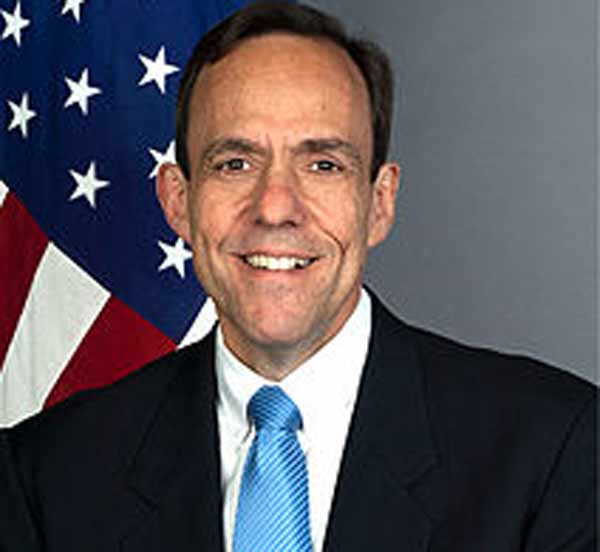Dhaka, Bangladesh (BBN) – The central bank of Bangladesh has unveiled a ‘restrained’ monetary policy aiming to bring down inflation to a single digit from the existing double digit level through discouraging credit flow to unproductive sectors.
“We’ve announced an appropriate monetary policy, considering the country’s latest overall economic situation and also keeping the developments in the global economy into account,” Bangladesh Bank (BB) Governor Dr. Atiur Rahman told reporters at the central bank in the capital Dhaka on Thursday while announcing the monetary policy statement (MPS) for January-June period of the current fiscal year (FY).
The MPS said the monetary stance in the second half (H2) of FY 2011-12 will pursue a restrained monetary growth path in order to curb inflation and external sector pressures while ensuring adequate private sector credit to stimulate inclusive growth.
“This stance, which aims to bring inflation to single digit and stem foreign reserve depletion, is being closely coordinated with the Ministry of Finance as a prudent fiscal stance is essential for achieving these objectives,” it noted.
The BB revised its monetary targets setting the limit for private sector credit growth at 16 percent from an earlier projected level of 18 per cent for the current fiscal.
He also said the BB has revised the private sector credit growth target, considering the neighboring country’s situation.
“The credit to the private sector will rise if the government’s borrowing from the banking system remains with the tolerable limit,” the BB governor noted.
Besides, the BB has recently taken different measures to ensure credit flow to the productive sectors through discouraging loans to the less productive ones including consumer financing.
“The central bank has already changed loan margin ratio for various sectors including car loan aiming to discourage credit to the less productive sectors,” BB Senior Consultant Allah Malek Kazemi said while replying to a question.
He also said the central bank has taken the measure to restrain the growth of such loans, not to reduce number of borrowers.
“We’ve already opened a number of re-financing schemes to ensure available funds for the productive sectors including that of small and medium enterprises (SME),” Mr. Kazemi added.
Under the revised monetary program, domestic credit growth will come down to 19.1 percent in June 2012 from an earlier estimated 20 percent for this fiscal while credit to the public sector will expand by 31 percent, somewhat higher than the original target of 28.1 percent. The public sector credit growth was 62 percent in December 2011.
About the inflationary pressures on the economy, the MPS said non-food inflation is still steadily increasing — partly due to energy and petroleum price adjustments — reinforcing the need for focusing attention on curbing inflation to a single digit level.
The central bank chief said containing inflation is the biggest challenge for the economy right now and the bank wants to see it within single digit, which has been tenaciously staying at double digit for the last nine months.
The inflation, averaging 10.7 per cent in December 2011, is higher than the projected average rate of 7.5 per cent in the national budget document.
“We’re hopeful to see taming of the inflationary pressure in the fourth quarter of this fiscal,” the BB senior consultant noted.
The central bank projected the growth of the country’s gross domestic product (GDP) at a level between 6.50 percent and 7.0 percent for the FY 12. The growth rate was earlier projected at 7.0 per cent in the national budget for FY12 on the basis of the domestic and global economic conditions, prevailing during that time.
The central bank, however, projected that the country’s overall balance of payments may hit US$826 million by the end of FY12 from an estimated level of $439 million earlier while the deficit in the current account balance has been projected to come down to $243 million from an earlier estimated level of $884 million.
The MPS also said the capital account has worsened significantly partly due to very low aid inflows. As a result of these pressures, the Taka/US dollar exchange rate has depreciated by about 15 per cent in the twelve months leading to mid-January 2012 and foreign exchange reserves have also fallen from $10.1 billion to $9.2 billion during this period.
“…we expect that a new external sector equilibrium will be reached soon,” it said, adding that the fiscal stance is supportive of the government’s growth strategy but the sharp decline in foreign aid, a rising subsidy bill and low levels of non-bank borrowing, has led to rapid growth of borrowing from the banking sector, including that of the BB.
Senior economic adviser to governor Hasan Jaman, deputy governors M Abul Kashem, Abu Hena M Razee Hasan, SK Sur Chowdhury and Nazneen Sultana were present.
The first-ever monetary policy statement was formally published in January 2006 and the central bank of Bangladesh declared that it would publish it on a half-yearly basis along with a half-yearly policy review.
BBN/SSR/AD-27Jan12-10:59 am (BST)








